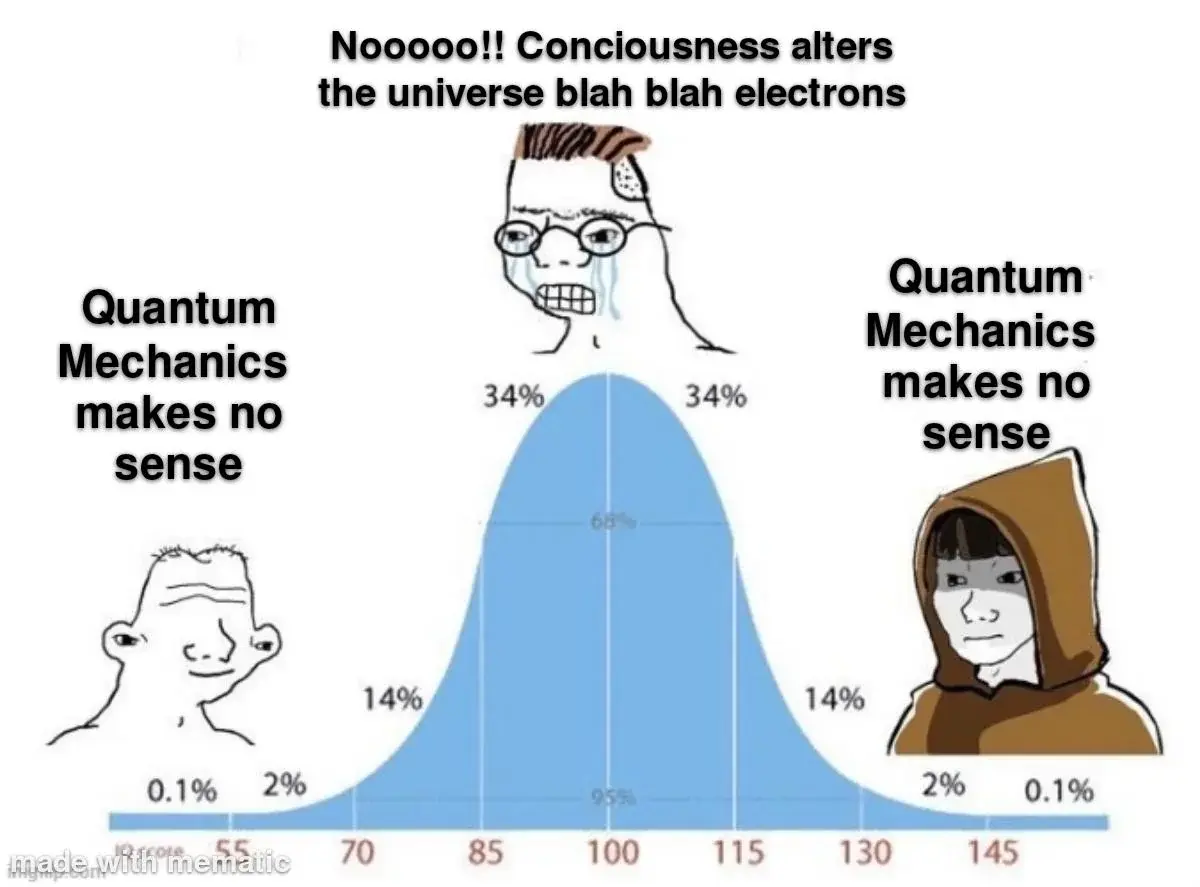this post was submitted on 12 Dec 2023
364 points (94.4% liked)
Science Memes
11764 readers
1625 users here now
Welcome to c/science_memes @ Mander.xyz!
A place for majestic STEMLORD peacocking, as well as memes about the realities of working in a lab.

Rules
- Don't throw mud. Behave like an intellectual and remember the human.
- Keep it rooted (on topic).
- No spam.
- Infographics welcome, get schooled.
This is a science community. We use the Dawkins definition of meme.
Research Committee
Other Mander Communities
Science and Research
Biology and Life Sciences
- [email protected]
- [email protected]
- [email protected]
- [email protected]
- [email protected]
- [email protected]
- [email protected]
- [email protected]
- [email protected]
- [email protected]
- [email protected]
- [email protected]
- [email protected]
- [email protected]
- [email protected]
- [email protected]
- [email protected]
- [email protected]
- [email protected]
- [email protected]
- [email protected]
- [email protected]
- [email protected]
- [email protected]
- !reptiles and [email protected]
Physical Sciences
- [email protected]
- [email protected]
- [email protected]
- [email protected]
- [email protected]
- [email protected]
- [email protected]
- [email protected]
- [email protected]
Humanities and Social Sciences
Practical and Applied Sciences
- !exercise-and [email protected]
- [email protected]
- !self [email protected]
- [email protected]
- [email protected]
- [email protected]
Memes
Miscellaneous
founded 2 years ago
MODERATORS
you are viewing a single comment's thread
view the rest of the comments
view the rest of the comments

What if you just measure the ambient particles
Then you are measuring something with matter still and it then affects it. Literally causing interactions to measure means altering it's state even at a nonchalant glance.
hmm, I can get how that might cause the measured item to say, change its velocity, but not how that would cause a wave to collapse into a single point.
It's not a physical wave. A wavefunction describes how likely something is to have different values for one of its properties. For example, an electron might have a wavefunction describing how likely it is to be in different locations. By observing if it actually is in a certain location or not, you force the electron to decide where it is concretely, "collapsing" the probability function into one value (its newly decided location).
Right but how do you measure the things around what you are trying to measure and get any data from it unless you expect them to also interact with the things you are measuring.
You have to have an interaction to measure even if you are measuring the outcome and steps away from the original interaction.
It's like measuring dark matter where the easiest way to prove it's existence was to wait and capture the decay of it but not the particle itself. But that means the particle was already gone when we got the measurements to prove it was there.